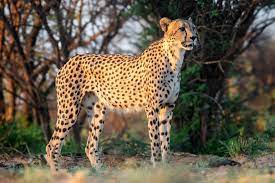India is set to welcome 8-10 cheetahs from Kenya by 2026 as part of its ongoing wildlife conservation initiative, Project Cheetah, according to reports from The Times of India. The translocation aims to strengthen the small population of cheetahs already established in Indian national parks and wildlife sanctuaries.
Kenya is one of three African nations collaborating with India on this project, alongside Namibia and Botswana. Negotiations are underway to ensure the smooth relocation of these majestic predators, with plans for the cheetahs to be released in either Kuno National Park (KNP) or the Gandhinagar Wildlife Sanctuary in Madhya Pradesh. Both sites have previously received cheetahs from Namibia and South Africa over the past four years.
Preparations are also ongoing at Nauredehi Wildlife Sanctuary in Madhya Pradesh and the Banni Grasslands in Gujarat to host additional cheetahs in the near future. This translocation project is part of India’s broader effort to restore the cheetah population in the country, which currently stands at 27 individuals 24 in Kuno National Park and three in Gandhi Sagar Wildlife Sanctuary. This group includes 16 cubs born in India, along with the original imported adults.
Meanwhile, Indian President Droupadi Murmu is on a state visit to Botswana, where she is expected to sign a formal agreement to green-light the translocation of cheetahs from the country. Botswana’s first batch of cheetahs is expected to arrive in India between December 2025 and January 2026.
Since India received its first cheetahs from Namibia in 2022 and South Africa in 2023, the survival rate has been mixed. Of the 20 imported cheetahs, 11 survived, and 26 cubs have been born in Kuno National Park, with 16 surviving to date.
Kenya remains home to an estimated 800 to 1,200 adult cheetahs, spread across its national reserves and private conservancies. The upcoming translocation marks a significant step in international conservation efforts, highlighting collaboration between India and African nations to protect this vulnerable species.

